|
|
| Missing In Action (MIA) | Prisoners Of War (POW) | Unexploded Ordnance (UXO) |
| Chronology | Locations | Aircraft | Ships | Submit Info | How You Can Help | Donate |
|
| USAAF 19th BG Former Assignments 7th BG 22nd BS U.S. Navy Task Force 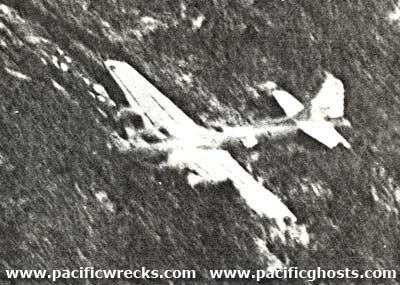 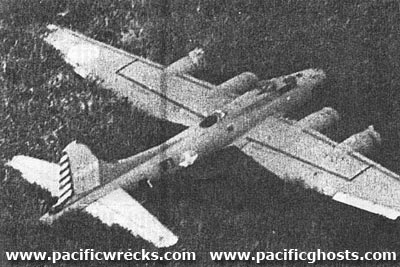 USAAF 1942 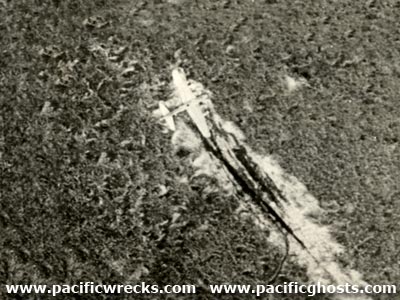 USAAF June 1942  Aust Army October 1972 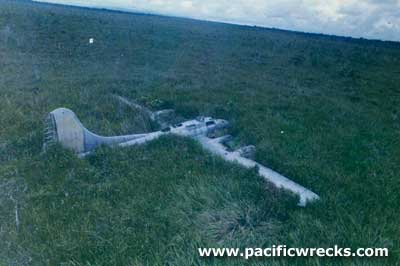 Charles Darby 1974 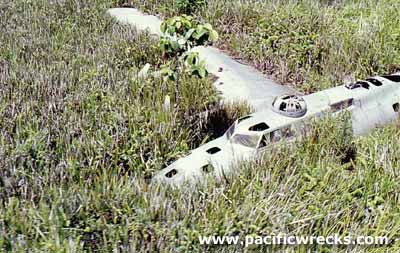 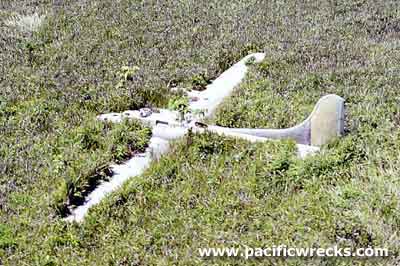 J. Mierzejewski 1976  Bill Thompson 1980 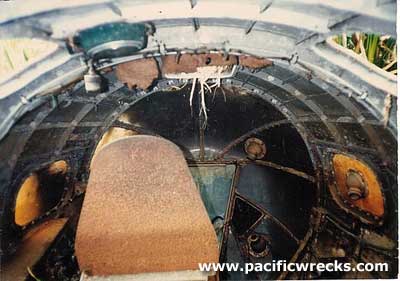 Bruce Hoy 1986 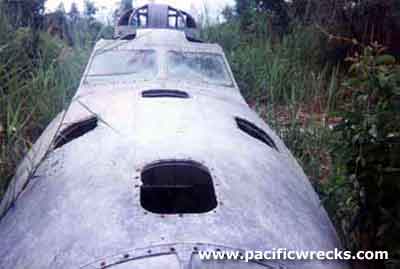  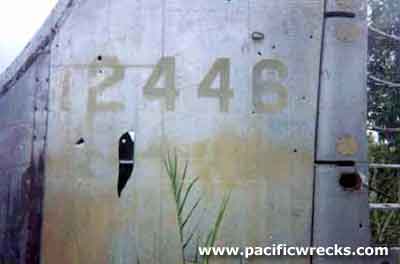 John Douglas 1996 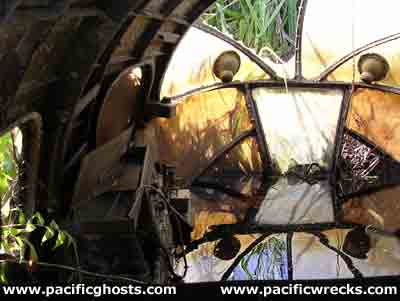  Justin Taylan 2003 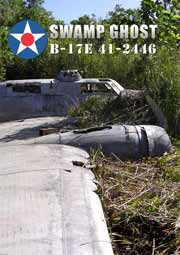 The Swamp Ghost DVD  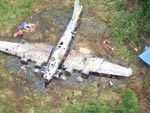 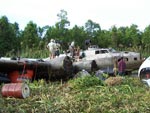 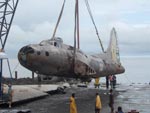 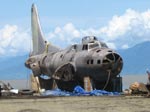 May 2006 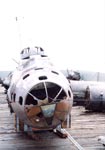 Richard Leahy 2006 |
Pilot Captain Frederick "Fred" C. Eaton, Jr., 0395142 (survived) Co-Pilot Captain Henry "Hotfoot" M. Harlow, 0398714 (survived) Navigator 1st Lt. George B. Munroe, Jr., 0412187 (survived) Bombardier Sgt Richard E. Oliver, 6578837 (survived) Engineer TSgt Clarence A. LeMieux, 6558901 (survived) Radio/Gunner Sgt Howard A. Sorensen, 6581180 (survived) Waist Gunner Sgt William E. Schwartz, 6913702 (survived) Waist Gunner TSgt Russell "Clippy" Crawford, 6851455 (survived) Tail Gunner SSgt John V. Hall, 671016 (survived) Force Landed February 23, 1942 MACR none Aircraft History Built by Boeing at Seattle. Constructors Number 2257. At the factory, painted with olive drab upper surfaces and gray lower surfaces with U.S. star insignia with a red dot at the center, U.S. Army on the lower side of the wings and a red and white striped tail rudder. On December 6, 1941 delivered by the U.S. Army Air Force (USAAF) as B-17E Flying Fortress serial number 41-2446. Wartime History On December 6, 1941 the same day it was delivered, took off from Boeing Field piloted by Lt. John Haig and flown to Fort Douglas Airfield. Next, flown to McClellan Airfield to Sacramento Air Depot (SAD) for installation of armament including .50 caliber and .30 caliber machine guns. Assigned to the 7th Bombardment Group (7th BG), 22nd Bombardment Squadron (22nd BS) to pilot Captain Frederick "Fred" C. Eaton, Jr. On December 17, 1941 took off from Hamilton Field on a flight to Hickam Field then to Wheeler Field. Attached to the U.S. Navy (USN) and flew search missions for the remainder of the month. While in Hawaii, bombardier, Sgt. J. J. Trelia became sick and Richard E. Oliver was assigned to the crew as his replacement. On February 11, 1942 departed Hawaii on a ferry flight across the Pacific bound for Australia as part of "A flight" led by Major Richard H. Carmichael. The flight departed Hickam Field and first flew to Christmas Airfield. The next day, they flew eight hours to Canton Airfield, then landed at Nadi Airfield on Fiji and were delayed one day while the loyalties of the Vichy French in New Caledonia were ascertained. Once considered safe, they transited through Plaine Des Gaiacs Airfield, then the last leg of the flight to Australia. On February 20, 1942 landed at Garbutt Field at Townsville. The next day, flown inland to Cloncurry Airfield to disperse it away from the threat of any Japanese aircraft. On February 22, 1942 flown back to Garbutt Field and assigned to the 19th Bombardment Group (19th BG) to participate in the first bombing mission in the South Pacific as part of a bombing mission of B-17s from the U.S. Army Air Force (USAAF) with a departure planned for later in the evening. Originally, the mission was to be in conjunction with an attack by U.S. Navy (USN) carrier aircraft from USS Lexington (CV-2) but Task Force 11 (TF-11) was spotted and bombed by Japanese aircraft and the Navy decided to abort the raid. Regardless, the U.S. Army Air Force (USAAF) decided to proceed with nine B-17 Flying Fortress, the only heavy bombers available in northern Australia. The mission plan was for the nine B-17 Flying Fortresses to take off from Garbutt Field on February 22, 1942 during the evening and fly northward overnight without escort as the distance was beyond the range of Allied fighter aircraft. On February 23, 1942 at dawn the bombers would arrive over Simpson Harbor off Rabaul and bomb Japanese shipping. Returning, the B-17s would land at 7 Mile Drome near Port Moresby to refuel then fly back to Garbutt Field. Rushing to prepare and without sufficient ground crew to support operations, the bomber crews were required to load their own bombs and prepare the their bombers for combat. While taxing in the darkness at Garbutt Field before take off B-17E 41-2434 accidentally collided with B-17E 41-2416 damaging both bombers. Also, B-17E pilot DuBose could not start his no. 3 engine and was unable to participate. Mission History On February 22, 1942 in the late evening took off from Garbutt Field near Townsville piloted by Captain Frederick "Fred" C. Eaton, Jr. armed with bombs as one of six B-17s led by Major Richard H. Carmichael on a bombing mission against Japanese shipping in Simpson Harbor off Rabaul. After take off, the formation divided into two echelons. The 1st echelon was led by B-17E pilot Col Carmichael, B-17E 41-2446, B-17E pilot Swenson and B-17E 41-2408 pilot 1st Lt Harry N. Brandon. The 2nd echelon: B-17E pilot Lewis and B-17E pilot Speith. Inbound, the bombers experienced bad weather and proceeded to the target area individually. Unable to find the target and due to bad weather, B-17E pilot Speith aborted the mission. On February 23, 1942 at dawn, only five B-17s managed to reach the Rabaul area and made individual bomb runs from high altitude against Japanese ships in Simpson Harbor. On the first bomb run, this B-17 was unable to release its bombs due to a mechanical problem with the bomb bay and elected to go around again to make another run. On the second bomb run, this B-17 was reportedly hit by an anti-aircraft shell that penetrated the right wing without exploding and created a hole visible to the crew before releasing their bombs on a Japanese freighter estimated to be 10,000 tons but was unable to observe the results of their bombing due to clouds below. Departing, this B-17 was intercepted by Japanese fighters including A5M4 Claudes and A6M2 Zeros. To escape, this B-17 flew at higher throttle settings and maneuvered to escape while the gunners fired as the fighters made runs against them. Tail gunner SSgt John V. Hall claimed one A6M2 Zero shot down at 24,000 feet after firing burst of 400 rounds from a range of 200-300 yards. Waist gunner Crawford, claimed two more. In fact, none of the intercepting Japanese fighters were lost or damaged. The fighters did manage to hit the tail and rear of the bomber with gunfire including 7.7mm bullets and 20mm cannon shells but the damage was only superficial. After the battle, this B-17 reached the north coast of New Guinea before running low on fuel. Spotting an open field, Eaton successfully force landed wheels up. From the air, he thought it was dry ground, but actually it was Agaiambo Swamp a vast swamp with kunai grass. As the bomber touched down, it turned slightly, pointing the nose of the B-17 to the southeast at a heading of 183 degrees fully intact. When this bomber failed to return, it was reported as Missing In Action (MIA) until the fate of the crew was known. Fate of the Crew The entire crew survived the landing unhurt and took the B-17's life raft to tow with their equipment. Before departing, Sgt Richard E. Oliver removed the top secret Norden bombsight, shot it with his pistol and threw it into the swamp. The entire crew departed as a group, initially towing one of the life rafts, but it was soon abandoned because it was difficult to maneuver in the swamp and thick kunai grass. The crew trekked in swamp and thick kunai grass for days and quickly became lost and disoriented. At one point while suffering from heat exhaustion and fatigue they considered splitting up, but decided to stay together. Finally, they spotted a native and were taken to his village where they were fed and spent the night. After the crash, Australian Resident Magistrate Alan Champion at Buna was told a B-17 went down in his area and was told to search for the crew. Departed from Gona in a mission launch, he searched the area near Oro Bay and the Musa River. Unable to find them, he called into a village and found the crew in their care. The crew of nine were too numerous for his boat and required him to borrow a canoe from the village, to tow everyone back to Buna. For two weeks, the crew waited at Buna until MV Matoma arrived at Oro Bay and embarked the crew to transport them via Samari Island and Abau Island before arriving at Fairfax Harbor at Port Moresby on April 1, 1942. In total, it was thirty-six days since their crash landing. Afterwards, all were send to Australia to recover in the hospital then returned to duty. Wreckage The intact B-17 remained in situ in the Agaiambo Swamp inland from the north coast of New Guinea. During the Pacific War, the bomber was known to American air crews and sometimes overflown returning from missions, including by former pilot Captain Frederick C. Eaton. In the postwar aviation era, the B-17 was sometimes by aircraft overflying the area as a landmark in the otherwise featureless swamp area. As time passed the B-17 was forgotten and became partially overgrown with kunai grass. During the wet season, this kunai grass grew tall enough to obscure most of the bomber and swamp water partially filled the fuselage. During 1972, the bomber was rediscovered during an RAAF helicopter exercise. The B-17 was found to be in remarkable condition and fully intact. Aboard all the interior equipment was prewar U.S. Army Air Corps issue. Even the belted .50 caliber ammunition was manufactured in 1933, 1935 and some during 1938. Airframe corrosion was negligible and no damage aside from bent propellers from the crash landing, and some broken perspex glass. On October 22, 1974 Charles Darby visited the bomber by helicopter. Photographs from his visit were the first publish in his book Pacific Aircraft Wrecks. His photos show the radios, compass and flight yokes still in place. After rediscovery, visitors to the wreck removed the instruments, guns and ammunition. The machine guns were removed by Australians during the 1972 visit. One .50 caliber machine gun was later donated to the PNG Museum where it was displayed until 2006. "Swamp Ghost" nickname and International Icon The "Swamp Ghost" nickname was coined by articles and visitors to the wreck. It is not the aircraft's wartime nickname. The plane is nearly impossible to locate during the 'wet season', due to the high kunai grass and swamp around, and is half submerged in swamp water. Few visitors and no grass fires have have kept the plane in excellent condition. The wreck appeared in National Geographic Magazine (March 1992, page 68-69). Also, in many books and magazine articles, and has been visited by people by foot and helicopter. Salvage Proposal: Travis Air Force Base During 1985-1987 a group from Travis Air Force Base wanted to recover the wreck and bring it back to the United States for restoration to flying status (but the plane would be permanently grounded). They presented a plan that included restoring several planes for the PNG Museum. Their plan was eventually rejected by the museum and their effort stalled. Salvage Proposal: Tallichet / Hagen Later, in the 1990s, Alfred Hagen began negotiating on behalf of David Tallichet / MARC for the right to salvage the wreck in exchange for $100,000 USD. The museum issued a permit in 1999 that expired in five years. Tallichet lost interest in the project after more stalls and delays. Alone, Hagen continued with the proposal No action was taken on the permit, and it expired without any salvage undertaken. In 2003, Robert Greinert advised the PNG Museum's Board of Trustees that the wreck was falling apart and needed to be salvaged. Hagen did not have input or involvement with the reports production, but did fund the visit to the aircraft by Greinert and others on November 21, 2003. The 1999 export permit had expired, but this permit had an automatic renewal clause in the contract. Salvage Hagen and Greinert, along with a salvage team from America and Australia began the salvage of the wreck in late April until early May 2006. Salvager cut off the wings, engines and tail stabilizers. With a hired MI-8 helicopter, the parts were flown to the coast, and loaded aboard a barge, then shipped to Lae. Impounded at Lae By the time the barge arrived at Bismarck Shipping at Lae, new of the salvage had spread. The controversy about its salvage and plans were made public in PNG's newspaper coverage. At Lae, the export was hauled. Two .50 caliber machine guns in the lower Bendix turret were seized. The B-17 remained impounded at Lae from May 2006 until late January 2010. PNG Government Investigation by Public Accounts Committee (PAC) Investigated by the PNG Government's Public Accounts Committee (PAC) during May-September 2006, They found the salvage to be illegal. Despite declaring the salvage and sale illegal, the salvagers continue to exert pressure on the PNG Government and National Museum and Art Gallery (PNG Museum) to allow them to export the wreck. During April 2008, the presented virtually the same proposal as originally offered, roughly $100,000 USD, but added the intention to donate a 'display facility' to the museum. According to PNG newspaper article on September 10, 2008, a vote by the National Executive Council (NEC) has apparently reversed their decision, and accepted the offer for 300,000 Kina (roughly $115,000 USD) plus "display facility, recreation playground and barbecue area". The precise details of this deal, or copies of letters or executive orders have never been published to the public. Export During January 2010, salvager Hagen returned to Papua New Guinea (PNG) visiting Lae and Port Moresby. Suddenly, the B-17 was moved from Bismarck Shipping to the dock area at Lae and loaded aboard three 40' flat rack containers aboard the ship Tasman Pathfinder that departed January 27, 2010 and was shipped via Auckland then transfered to another ship across the Pacific to the United States. During May 2010, the containers arrived at the Port of Long Beach in California. Unveiling and Display On June 11, 2010 an unveiling ceremony was held at the Reef Restaurant at Long Beach with the fuselage displayed. The event was attended by three children of the crew plus John Talichet (son of David Talichet) and Alfred Hagen. Afterwards, the B-17 was moved to Chino Airport and placed into storage. On December 8, 2010, the fuselage went on display outdoors ringed by a fence at Planes of Fame Museum at Chino Airport. On April 2, 2011 salvager Alfred Hagen gave a lecture "Recovering Lost Aircraft - B-17E Swamp Ghost" at the museum. During this period, the rear fuselage, tail and wings were stored outdoors at AeroTrader also located at Chino Airport. During January 2013, the fuselage was removed from public display and moved to AeroTrader, where the bomber was readied for shipment to Hawaii. According to Flightpath Magazine July 2012, the B-17 was bound for the Pacific Aviation Museum (Ford Island Museum). When asked on February 25, 2013, executive director Ken DeHoff stated "no comment" when asked if Swamp Ghost was bound for the museum and declined to answer any questions. Since 2013, B-17E 41-2446 was displayed at the Pacific Aviation Museum outdoors adjacent to hangar 79. The bomber is displayed behind a perimeter fence with signs at the front of the aircraft. During 2015, the aircraft was moved inside hangar 79. Memorials Hall passed away on January 25, 1969 at age 56. He is buried at Mount Vernon Memorial Park in Fair Oaks, CA. Schwartz passed away on September 29, 1970. He is buried at Lakeside Cemetery in Pekin, IL. Harlow passed away in 1979. He is buried at Bethel Baptist Church Cemetery in Palmyra, VA. Crawford passed away in 1987 at age 70. He is buried at Nicolet Memorial Gardens in Green Bay, WI. Eaton passed away on June 27, 1994 at age 73. He is buried at Hickory Bluff Cemetery in Stevensville, MI. Sorensen passed away February 17, 2004 at age 82. He is buried at Rose Hills Memorial Park in Whittier, CA at Deseret Lawn, Section 2, Lot 515, Grave 2. Oliver passed away August 22, 2009 at age 89. On November 10, 2009 buried at Arlington National Cemetery at section 60 grave 8950. LeMieux passed away December 17, 2009 at age 92. He is buried at Stilwell Cemetery in Stilwell, OK. Munroe passed away January 17, 2010 at age 91. On February 2, 2010 buried at Arlington National Cemetery at court 5, section N5 column 6 niche 4. Relatives Are you a relative of Howard Sorensen and J. J. Trelia? Contact us. References Individual Aircraft Record Card (IARC) - B-17E Flying Fortress 41-2446 USAF Serial Number Search Results - B-17E Flying Fortress 41-2446 Diary of Frederick "Fred" C. Eaton, Jr., February 1942–March 1942 PNG Museum Aircraft Status Card - B-17E Flying Fortress 41-2446 TheSwampGhost.com details this bomber, the crew, resources and photo archive Swamp Ghost DVD video documentary detailing the aircraft and crew Pacific Aircraft Wrecks (1979) pages 7, 56 (middle and lower photos) War Diary 1942 (1984) pages 27, 31 (Page 27) "22 Sunday [February 22, 1942] First raid by Americans: R.A.A.F. Catalinas and U.S. Boeings [B-17E Flying Fortresses] took part in raid on Rabaul [the RAAF bombed in the early morning of February 22, 1942 and and B-17s bombed at dawn on February 23, 1942]. Initiation for the Yanks, but heavy cloud over the target and the Americans brought their bombs back [sic, B-17s bombed ships in Simpson Harbor without results]. They wouldn't go below 20,000 feet but the old Catalinas went down to 6,000 feet through the clouds and got rid of their bombs. One of the 'Flying Fortresses' is reported missing [B-17E 41-2446]." (Page 31) "1 Sunday [March 1, 1942] Fortress crew safe: Crew of 'Flying Fortress' posted missing on February 22 [sic February 23, 1942] have been located. Their plane was forced down in tough country and the crew had to struggle for a week through the jungle with no food except yams, taro and other native food. They eventually contracted a white man [Australian Resident Magistrate Alan Champion] who reported their plight." On Wings We Conquer (1990) page118-119 (photo) National Geographic Vol. 181, No. 3 (March 1992) "Douglas MacArthur" pages 68-69 Fortress Against The Sun (2001) pages 61, 153-154, 400, 385 PNG Government Public Accounts Committee Reports about Swamp Ghost May-Sept 2006 Flightpath Magazine "Swamp Ghost to Hawaii" by Mike Shreeve July 2012, page 8 FindAGrave - Virtual Cemetery created by PacificWrecks.com - B-17E 41-2446 (aka "Swamp Ghost") FindAGrave - Frederick E. Eaton (grave photo) FindAGrave - Henry M Harlow (grave photo) FindAGrave - George B Munroe (grave photo) Arlington National Cemetery - ANC Explorer George B Munroe FindAGrave - Richard Emmitt “Dick” Oliver Arlington National Cemetery - ANC Explorer - Richard E. Oliver FindAGrave - Col Clarence A. LeMieux (grave photo) FindAGrave - Howard Alma Sorensen (grave photo) FindAGrave - William E Schwartz (grave photos) FindAGrave - Russell Crawford FindAGrave - John V. Hall (grave photo) Thanks to Richard E. Oliver, George B. Munroe and Clarence A. LeMieux for additional information Contribute Information Are you a relative or associated with any person mentioned? Do you have photos or additional information to add? Last Updated October 22, 2025
|
B-17 Formerly S 9 12 29 E 148 39 78 Photo Archive Save Swamp Ghost Petition The Swamp Ghost DVD Swamp Ghost News PNG Gov't PAC Report Learn the Truth |
| Discussion Forum | Daily Updates | Reviews | Museums | Interviews & Oral Histories |
|